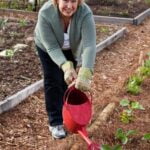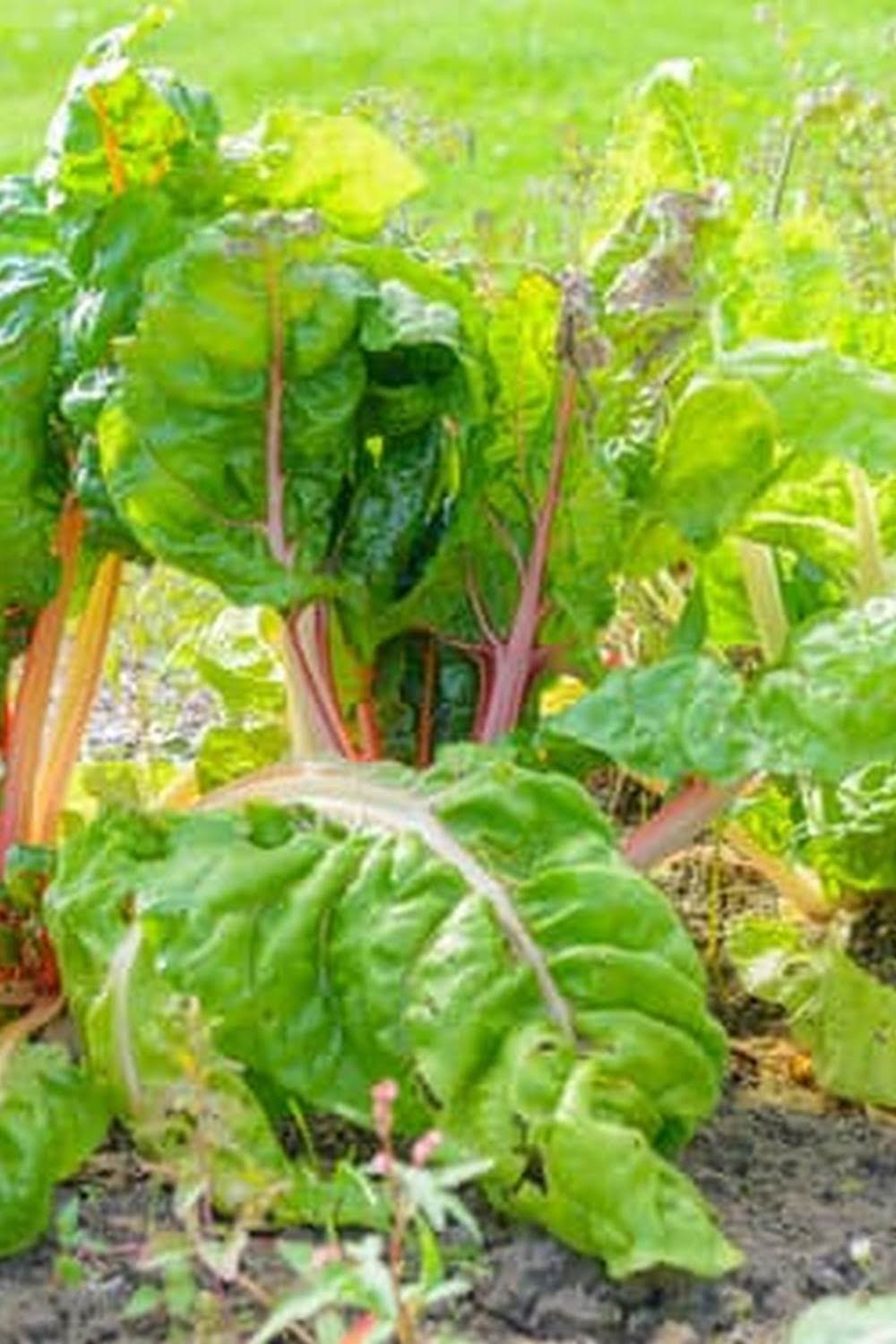Are you a beginner looking to start your own vegetable garden in Australia? Look no further. This comprehensive guide will provide you with all the information you need to get started on your journey to successful vegetable gardening. From understanding the unique Australian climate and soil to selecting the right vegetables and learning essential tips for planting, maintaining, and harvesting, this guide has got you covered.
When it comes to vegetable gardening in Australia, it’s important to understand the specific climate and soil conditions that can impact the success of your garden. In this section, we will delve into the various factors that contribute to successful vegetable gardening in Australia, including the diverse climate across different regions and the particular soil types that are prevalent.
Once you have a solid understanding of the Australian climate and soil for vegetable gardening, you can then move on to selecting the right vegetables that are best suited for this environment. Understanding which vegetables thrive in different parts of Australia will set you up for success as a beginner gardener.
Whether you’re dealing with hot and dry conditions or cooler temperatures, there are plenty of options to choose from when it comes to deciding what to grow in your own backyard. With this guide, you’ll be equipped with the knowledge needed to make informed decisions about which vegetables to plant in your garden.
Selecting the Right Vegetables for Australian Climate
When starting a vegetable garden in Australia, it is essential to select the right vegetables that can thrive in the local climate. The Australian climate varies greatly from region to region, so it’s important to consider your specific location when choosing which vegetables to plant. Here are some key factors to consider when selecting the right vegetables for Australian climate.
Consider the Climate Zones
Australia is divided into different climate zones, ranging from tropical in the north to temperate and cool in the south. It’s important to research and understand which climate zone you are located in, as this will determine which vegetables are best suited for your area. For example, leafy greens like spinach and lettuce thrive in cooler regions, while heat-loving crops such as tomatoes and capsicums do well in warmer climates.
Choose Drought-Tolerant Varieties
Given the unpredictable nature of Australian weather, it’s wise to choose vegetable varieties that are drought-tolerant. Look for vegetables that require less water and can withstand periods of dryness, such as cherry tomatoes, zucchini, and Swiss chard. These varieties are more likely to survive during times of water scarcity or extreme heat.
Opt for Native Australian Varieties
Another consideration when selecting vegetables for your garden is to opt for native Australian varieties. These plants are naturally adapted to the local environment and will often require less maintenance compared to non-native species. Some examples of native Australian vegetables include bush tomatoes, Warrigal greens, and finger limes.
By taking into account these factors and doing thorough research on which vegetables are best suited for your specific location within Australia, you can set yourself up for a successful vegetable garden. Remember that trial and error is also part of the learning process, so don’t be afraid to experiment with different vegetable varieties to see what works best in your garden.
Preparing the Soil for Vegetable Gardening in Australia
When it comes to vegetable gardening in Australia, preparing the soil is crucial for the success of your garden. The Australian climate and soil conditions can vary greatly depending on where you are located, so it’s important to understand your specific environment before getting started.
To prepare the soil for vegetable gardening in Australia, here are some essential steps that beginner gardeners should follow:
1. Test the Soil: Before you start planting, it’s important to test the pH and nutrient levels of your soil. You can purchase a DIY soil testing kit or send a sample to a professional lab for analysis. This will help you determine if any adjustments need to be made to make your soil more suitable for vegetable growth.
2. Add Organic Matter: Incorporating organic matter such as compost, manure, or mulch into your soil can improve its structure and fertility. Organic matter helps retain moisture, promotes healthy root growth, and provides essential nutrients for plants.
3. Consider Raised Beds: In areas with poor soil quality or drainage issues, consider using raised beds for your vegetable garden. This allows you to have more control over the type of soil used and can also make gardening more accessible for those with physical limitations.
By following these steps, beginner gardeners can ensure that their soil is well-prepared for successful vegetable gardening in Australia. With healthy, fertile soil as a foundation, you’ll be on your way to growing an abundant and thriving garden full of delicious produce.
Essential Tools and Equipment for Beginner Vegetable Gardeners in Australia
When starting a vegetable garden in Australia, it is essential to have the right tools and equipment to ensure the success of your gardening venture. As a beginner, acquiring the necessary tools can be overwhelming, but with the right knowledge, you can easily get started on your gardening journey.
Basic Tools
The first step in establishing your vegetable garden is acquiring basic gardening tools such as a shovel, garden fork, hoe, hand trowel, and pruners. These tools will assist you in preparing the soil, planting your vegetables, and maintaining your garden.
Watering Equipment
Adequate watering is crucial for the health and growth of your vegetables. Consider investing in a quality watering can or garden hose with a sprinkler attachment to ensure that your plants receive sufficient water during dry spells. Additionally, installing a drip irrigation system can make it easier to maintain consistent moisture levels in your garden.
Protective Gear
It’s important to prioritize safety while working in your vegetable garden. Investing in a pair of gardening gloves, knee pads, and sunscreen will protect you from potential injuries and sun exposure as you tend to your plants.
As a beginner to vegetable gardening in Australia, having the right tools and equipment is essential for a successful growing season. With these basics on hand, you’ll be well-prepared to cultivate healthy and thriving vegetables in your Australian garden.
Planting and Maintaining Vegetables in Australian Climate
When it comes to vegetable gardening in Australia, it’s vital to understand the unique climate and conditions of the country. Australia has a diverse climate, with some areas experiencing extreme heat and dry conditions, while others have more temperate weather. It’s important for beginner vegetable gardeners to familiarize themselves with the specific climate of their region to ensure successful gardening.
One of the key factors to consider when planting and maintaining vegetables in the Australian climate is choosing the right varieties. Some vegetables thrive in hotter temperatures, while others prefer cooler conditions. For example, tomatoes, capsicum, and eggplant are well-suited for warmer regions, while carrots, kale, and lettuce are better suited for cooler climates. By selecting the right vegetables for your local climate, you’ll set yourself up for a more successful harvest.
In addition to choosing the right vegetables, it’s essential to pay attention to soil preparation and maintenance. Australian soils can vary widely, from sandy soils in coastal regions to clay soils inland. Testing your soil can provide valuable information about its pH levels and nutrient content, allowing you to amend it as needed for optimal vegetable growth.
| Vegetable | Ideal Climate |
|---|---|
| Tomatoes | Warmer regions |
| Lettuce | Cooler climates |
| Carrots | Cooler climates |
By understanding these aspects of vegetable gardening in Australia, beginners can set themselves up for success as they plant and maintain their first gardens.
Dealing With Common Pests and Diseases in Australian Vegetable Gardens
One of the biggest challenges that beginner gardeners in Australia face is dealing with common pests and diseases that can affect their vegetable gardens. The Australian climate can be conducive to a wide range of pests and diseases that can wreak havoc on your plants if you’re not prepared. However, with the right knowledge and strategies, you can effectively manage and minimize the impact of these issues on your garden.
To start, it’s important to familiarize yourself with the common pests and diseases that are prevalent in the Australian climate. Some of the most common pests include aphids, caterpillars, snails, and slugs, while diseases such as powdery mildew, root rot, and leaf spot can also pose significant challenges. By understanding what to look out for, you can be more proactive in preventing and managing these issues before they spiral out of control.
When it comes to managing pests and diseases in your vegetable garden, there are several eco-friendly methods that are safe for both your plants and the environment. For example, introducing beneficial insects like ladybugs or lacewings can help control pest populations naturally. Additionally, practicing crop rotation and companion planting can disrupt pest life cycles and reduce disease pressure. If necessary, there are also organic pesticides and fungicides that can be used as a last resort.
Overall, being attentive and proactive is key to managing common pests and diseases in your Australian vegetable garden as a beginner. By regularly inspecting your plants for signs of infestations or infections, implementing preventative measures, and being ready to take action when necessary, you can ensure a healthy harvest from your garden.
| Common Pests | Common Diseases |
|---|---|
| Aphids | Powdery Mildew |
| Caterpillars | Root Rot |
| Snails & Slugs | Leaf Spot |
Watering and Fertilizing Tips for Vegetable Gardening in Australia
When it comes to vegetable gardening in Australia, one of the most important factors for success is proper watering and fertilizing. The Australian climate can be quite hot and dry, so it’s essential to ensure that your vegetable garden is receiving adequate moisture and nutrients. Here are some tips for beginner vegetable gardeners in Australia to help with watering and fertilizing:
- Watering: It’s crucial to water your vegetable garden regularly, especially during the warmer months. Make sure to water deeply, allowing the water to penetrate the soil and reach the roots of your plants. Early morning or late afternoon is the best time to water your garden to minimize evaporation.
- Fertilizing: Providing the right nutrients to your vegetables is vital for healthy growth and a bountiful harvest. Consider using organic fertilizers such as compost, manure, or fish emulsion to enrich the soil. Be sure to follow recommended application rates for the specific vegetables you are growing.
In addition, it’s essential to consider the specific needs of each type of vegetable when it comes to watering and fertilizing. Some vegetables may require more frequent watering, while others may have different nutritional needs. Understanding the requirements of each plant will help you create an optimal growing environment.
Another important tip is to mulch your vegetable garden beds. Mulching helps retain moisture in the soil, reduces weed growth, and also adds organic matter as it breaks down over time. Organic mulches such as straw, grass clippings, or shredded leaves are great options for Australian vegetable gardens.
Lastly, keep an eye on the weather patterns in your area and adjust your watering and fertilizing schedule accordingly. During periods of heavy rain, you may need to reduce watering or hold off on fertilizer applications. By staying attentive to the needs of your plants and environment, you’ll be well on your way to a successful vegetable garden in Australia.
Harvesting and Enjoying the Fruits of Your Labor
In conclusion, the process of vegetable gardening in Australia can be a fulfilling and enjoyable endeavor for beginners. By understanding the Australian climate and soil, selecting the right vegetables, and preparing the soil properly, beginner gardeners can set themselves up for success. With the use of essential tools and equipment, planting and maintaining vegetables can become a rewarding experience.
Furthermore, dealing with common pests and diseases in Australian vegetable gardens can be manageable by implementing effective prevention and control methods. It’s important for beginner gardeners to also pay attention to watering and fertilizing their vegetable gardens properly to ensure healthy plant growth.
Finally, as beginner vegetable gardeners in Australia begin to harvest their produce, they can take pride in their hard work and enjoy the fruits of their labor. With these tips and guidelines provided in this beginners guide to vegetable gardening in Australia, novice gardeners can embark on an exciting journey of cultivating their own fresh and delicious vegetables.

If you’re looking to get into vegetable gardening, or are just looking for some tips on how to make your current garden better, then you’ve come to the right place! My name is Ethel and I have been gardening for years. In this blog, I’m going to share with you some of my best tips on how to create a successful vegetable garden.





